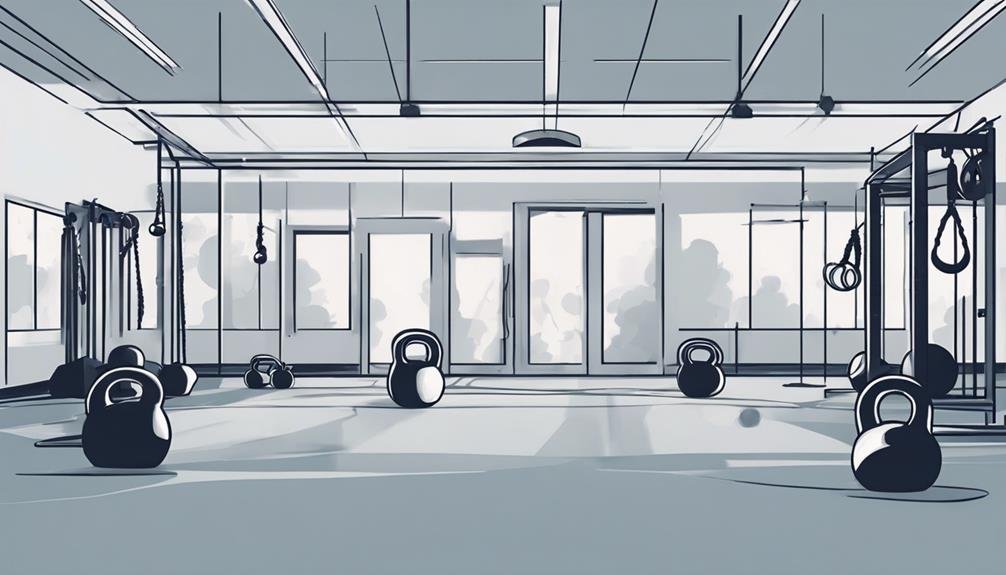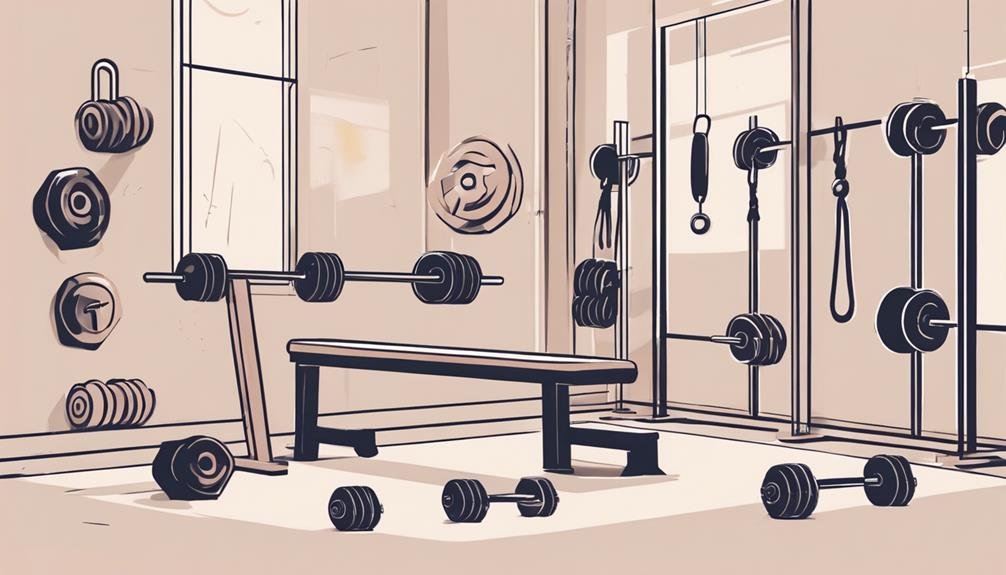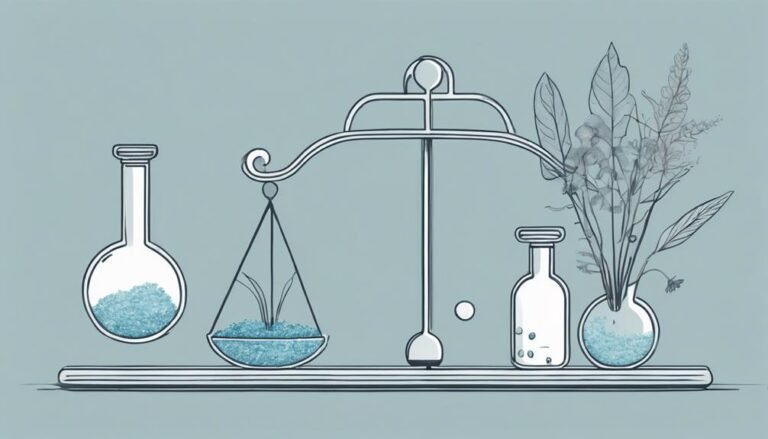Why Certain Workouts Naturally Elevate Men's Testosterone Levels
Certain workouts, like strength training and High-Intensity Interval Training (HIIT), naturally boost your testosterone levels. Heavy lifting with compound exercises, such as squats and deadlifts, engages large muscle groups, triggering increased hormone production. High-intensity bursts during HIIT effectively elevate testosterone while improving endurance and fat loss. Also, giving your body adequate rest is essential; it prevents overtraining, which can lower testosterone. Finally, a balanced diet rich in healthy fats and zinc supports hormone synthesis. Want to discover more ways to enhance your testosterone levels through exercise and lifestyle? There's plenty to explore!
Key Takeaways
- High-Intensity Interval Training (HIIT) boosts testosterone through intense exercise bursts that enhance overall workout efficiency and effectiveness.
- Strength training, particularly heavy lifting and multi-joint movements, stimulates hormone production and promotes greater testosterone release.
- Compound exercises engage multiple muscle groups, leading to a more significant hormonal response compared to isolation exercises.
- Adequate rest and recovery prevent overtraining, allowing for optimal testosterone production and muscle rebuilding.
Understanding Testosterone and Its Importance
Understanding testosterone's role in your body is essential for optimizing your workouts and overall health. This hormone influences muscle mass, strength, and energy levels.
When you have balanced testosterone levels, you'll likely experience improved performance, faster recovery, and greater motivation to push through challenging workouts. Low testosterone can lead to fatigue, decreased muscle growth, and even mood swings, making it harder to stay on track with your fitness goals.
To maximize testosterone production, focus on proper nutrition, quality sleep, and regular exercise. Incorporating strength training and maintaining a healthy body composition can help elevate your testosterone levels naturally.
High-Intensity Interval Training

High-intensity interval training (HIIT) can greatly boost your testosterone levels while enhancing your workout efficiency. By alternating between short bursts of intense exercise and periods of rest, you push your body to its limits, which triggers a hormonal response. This surge in intensity not only elevates your heart rate but also stimulates your endocrine system to produce more testosterone.
Incorporating HIIT into your routine can lead to significant improvements in endurance, strength, and fat loss. You don't need hours in the gym; just a few sessions each week can yield impressive results.
Plus, the time-efficient nature of HIIT means you get the benefits without sacrificing your schedule. So, if you're looking to elevate your testosterone naturally, HIIT is a fantastic option.
Strength Training Techniques
Strength training techniques not only complement the benefits of HIIT but also play a significant role in boosting testosterone levels and building muscle mass.
When you incorporate heavy lifting into your routine, you stimulate your body's hormone production.
Focus on multi-joint movements, like squats and deadlifts, to engage large muscle groups and maximize hormonal response.
Aim for lower repetitions with heavier weights for ideal testosterone release.
Don't forget to allow for adequate rest between sets; this rest period can enhance your hormonal response.
Additionally, varying your training intensity and volume keeps your body adapting, further promoting testosterone production.
Compound Vs. Isolation Exercises

When choosing between compound and isolation exercises, it's essential to recognize how each can impact your testosterone levels and overall fitness goals. Compound exercises, like squats and deadlifts, engage multiple muscle groups, leading to greater hormonal responses, including testosterone release. On the other hand, isolation exercises, such as bicep curls, target specific muscles but don't stimulate testosterone production as effectively.
| Exercise Type | Impact on Testosterone |
|---|---|
| Compound | High |
| Isolation | Moderate |
| Muscle Groups | Multiple |
| Caloric Burn | Higher |
| Hormonal Response | Greater |
Incorporating both types into your routine can provide balance, but focusing more on compound movements can help maximize testosterone levels.
The Role of Rest and Recovery
Rest and recovery play an essential role in optimizing your testosterone levels and overall workout performance. When you push your body, it needs time to repair and adapt.
Overtraining can lead to elevated cortisol levels, which may suppress testosterone production. Make certain you're getting enough sleep, as that's when your body does most of its hormone regulation and muscle recovery. Aim for 7-9 hours of quality sleep each night.
Incorporate rest days into your routine; these allow your muscles to rebuild and strengthen. Active recovery, like light stretching or walking, can also help maintain blood flow and reduce soreness.
Nutrition's Impact on Testosterone

Nutrition greatly influences your testosterone levels, making it essential to fuel your body with the right foods for ideal hormonal health.
To optimize your testosterone production, consider incorporating the following key nutrients into your diet:
- Healthy Fats: Foods like avocados, nuts, and olive oil support hormone production and overall health.
- Zinc-Rich Foods: Oysters, red meat, and legumes are excellent sources of zinc, which is critical for testosterone synthesis.
- Vitamin D: Make sure you get enough sunlight or consume fortified foods and fatty fish, as vitamin D plays an important role in maintaining testosterone levels.
Lifestyle Changes for Optimal Levels

Making simple lifestyle changes can greatly boost your testosterone levels and improve your overall health.
Prioritize quality sleep, aiming for 7-9 hours each night, as adequate rest is essential for hormonal balance.
Incorporate regular physical activity, focusing on strength training and high-intensity interval workouts, which have been shown to naturally elevate testosterone.
Manage stress through mindfulness practices like meditation or yoga, since high stress can lead to hormonal imbalances.
Maintain a balanced diet rich in healthy fats, lean proteins, and whole foods, while minimizing processed sugars.
Finally, limit alcohol consumption and avoid smoking, as both can negatively impact your hormone levels.
Questions
How Do Age and Genetics Influence Testosterone Levels in Men?
Age and genetics play significant roles in testosterone levels. As you age, your hormone production declines, while genetic factors determine your baseline levels. Understanding this helps you adapt your lifestyle to maintain hormonal balance effectively.
Can Women Also Experience Elevated Testosterone From Certain Workouts?
Imagine the pulse of your heart syncing with each powerful lift. Yes, women can experience elevated testosterone from certain workouts. Intense strength training and high-intensity intervals stimulate hormonal responses, enhancing both strength and vigor.
What Are the Signs of Low Testosterone in Men?
If you're experiencing fatigue, reduced libido, mood swings, or difficulty concentrating, you might have low testosterone. Additionally, you may notice decreased muscle mass or increased body fat. It's crucial to consult a healthcare professional for evaluation.
Are There Any Risks Associated With High Testosterone Levels From Exercise?
Raising testosterone through exercise might seem like striking gold, but there are risks. You could face mood swings, sleep issues, or cardiovascular problems. Balance your workouts to enjoy benefits without the potential downsides.
How Long Does It Take to See Changes in Testosterone Levels From Workouts?
You'll typically notice changes in testosterone levels within a few weeks of consistent workouts. However, individual results can vary based on intensity, workout type, and overall lifestyle, so stay committed for best results.
Conclusion
Incorporating the right workouts can truly boost your testosterone levels.
Think of it like tuning an old radio—when you find the right frequency with high-intensity intervals and strength training, everything clicks into place.
Pair that with proper rest, nutrition, and lifestyle choices, and you're optimizing your hormonal health.
So, embrace those compound exercises and make smart choices; you'll not only feel stronger but also support your body's natural testosterone production.







